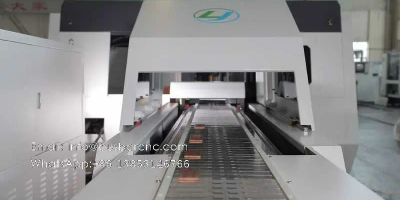RISC-V International, the global open standards organization, highlighted at the recent Global RISC-V Summit in San Jose that the RISC-V International community has achieved impressive growth milestones and technological advancements over the past year. According to reports, the number of members of RISC-V International has increased by more than 26% year-on-year, with more than 3,180 members in 70 countries. Today, there are more than 10 billion RISC-V cores on the market, and tens of thousands of engineers worldwide are working on the RISC-V initiative.
“Our vision for 2022 is to make RISC-V ubiquitous, and with the adoption and development of RISC-V in everything from automotive to aerospace to data centers to consumer devices, this vision has truly come true,” said RISC-V International CEO Calista Redmond said.
“With this momentum, there are already billions of RISC-V cores in the market, and we expect billions more by 2023 as companies and countries around the world embrace RISC-V,” she continued. explain.
Over the past year, the RISC-V software ecosystem has undergone a major update. Google’s Android Open Source Project (AOSP) has launched upstream support for RISC-V. Bringing Android to RISC-V will help support a wide range of consumer-focused use cases, from mobility to in-vehicle entertainment.
In addition, RISC-V International’s technical team provides RISC-V support for more software projects, covering all stacks. Glimpses of progress include coreboot, which provides open-source firmware; OpenSSL, which provides a robust commercial-grade toolkit for general-purpose encryption and secure communications; and seL4, a high-assurance, high-performance operating system microkernel.
Although Varma spent a lot of time introducing the benefits of RISC-V, she also believed that RISC-V needs to continue to improve, and issued a call for the ISA development community, saying that contributors need to work on standardizing functions and reducing fragmentation, which is also the key to development. Known RISC-V issues among people.
Varma said: “As a chip supplier, we see the need for standardized, RISC-V compatible system IP. We see a lot of innovation in the application processor field. We see a lot of diversity, competition, differentiation, which is very important. Good. But we need to make sure to standardize system IP to reduce ecosystem fragmentation.” The RISC-V community also needs to make sure it doesn’t backtrack on features sold for the ISA.
Varma pointed to other parts of RISC-V that need to be perfected, such as the need for a competitive compiler that optimizes the RISC-V ISA; an open source kernel community that can learn the latest and greatest ISA features; standardization and RISC A V instruction set architecture compatible software security stack is also critical. “By focusing on tools, libraries and languages, we can really accelerate the adoption of RISC-V software.”
RISC-V is an open specification like Ethernet. It was developed at UC Berkeley using a new RISC (Reduced Instruction Set Computer) design methodology. There have been many RISC ISAs in the past: 29K, Alpha, Arm, i960, MIPS, PowerPC, and SPARC to name a few. All other RISC architectures are tied to corporate owners, and most are obsolete.
The instruction set itself is scalable from 32 to 128 bits, is modular, and is scalable (customizable). As Patterson points out, there is a concern that this flexibility will lead to architectural fragmentation. To solve this problem, RISC-V will set some standardized profiles for application processors, where software and system compatibility is important. Every year, RISC-V International releases a new profile containing the basic components. For example, one of the most talked about extensions in the last year was Vector, which improves performance for compute and artificial intelligence workloads. Even without extensions and customizations, RISC-V offers a unique business model and possibly the most efficient RISC CPU core.
Shipments exceeded 10 billion! RISC-V membership grows by a quarter year-over-year
Looking at RISC-V, due to its relatively short birth time, RISC-V is still actively building relevant compilers, development tools, software development environments and other ecological elements in the Chinese local market. In addition, most of the early development of RISC-V was abroad, so international collaboration is crucial. In order for RISC-V to continue to develop in a healthy way, it is obvious that more ecological partners need to participate and cooperate. How to build a sustainable ecology is a core question for RISC-V.
The development of RISC-V in China is very rapid. The British organization Global Data even believes that: “Mainland China is vigorously developing the RISC-V architecture to get rid of the dependence on ARM. After 5 years, we will see remarkable results. At that time, maybe ARM It’s not necessary.” RISC-V has taken root all over the world, and according to RISC-V International, there are more than 3,180 RISC-V members in 70 countries.




